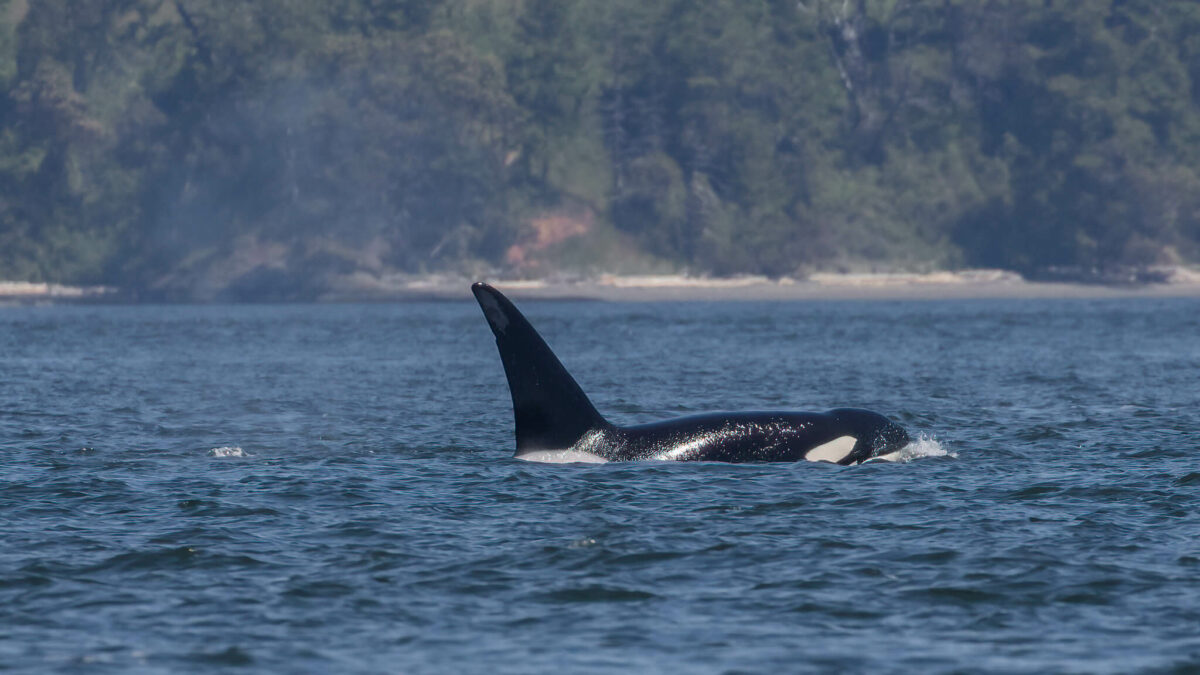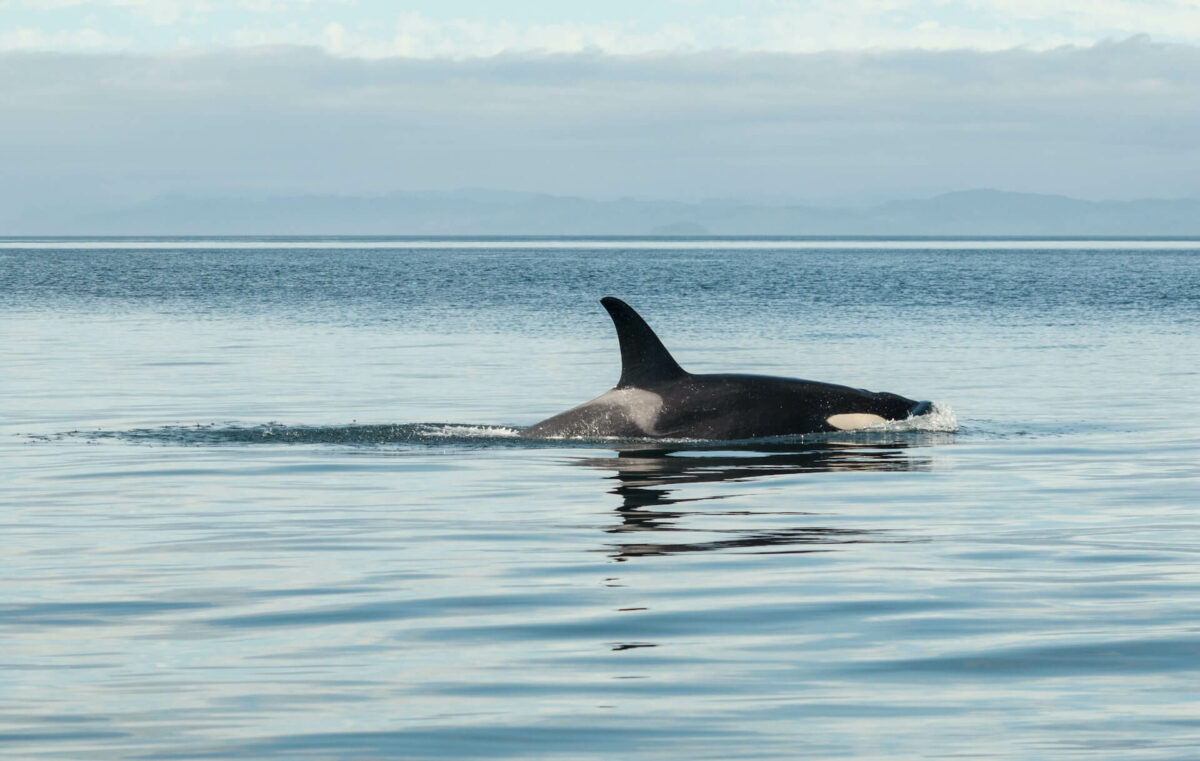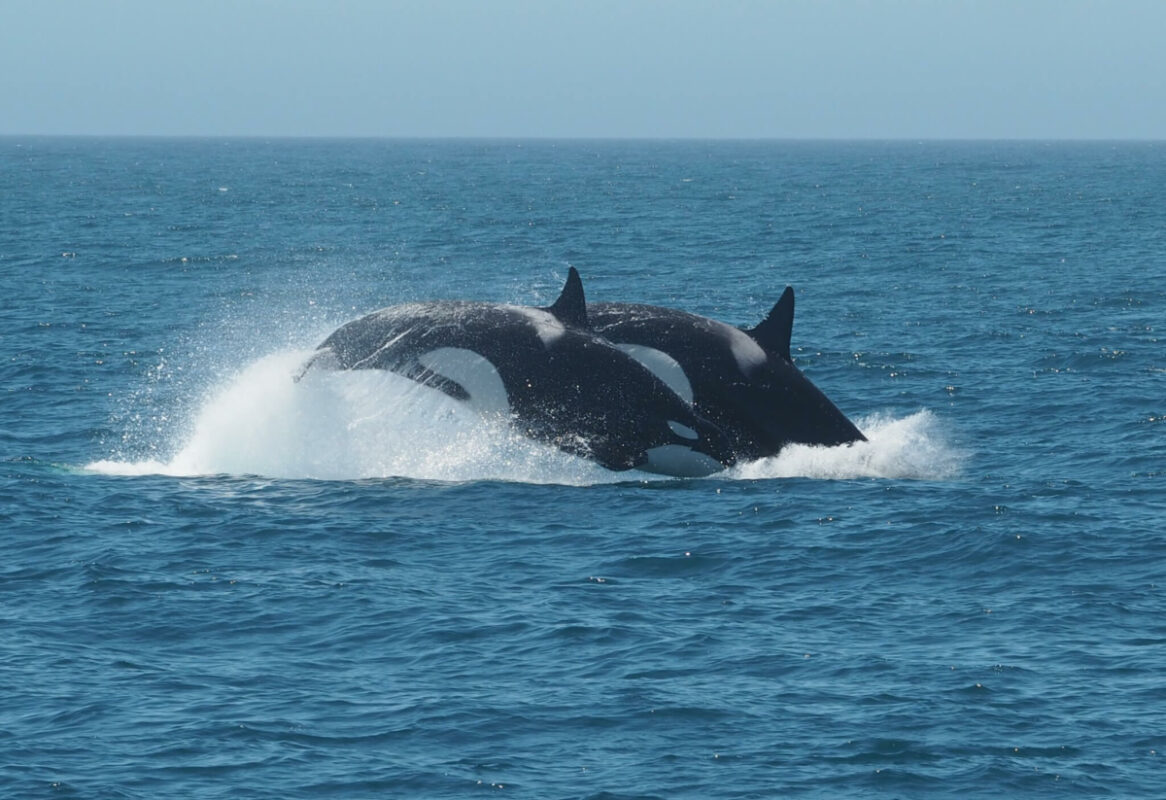Orcas, also known as killer whales are marine predators that be as long as 30 feet and weigh as much as 16,000 pounds.
They get the name “killer whales” from ancient sailors who observed groups of orcas hunting and preying on large whale species.
These formidable hunters are found in oceans all around the world, typically living in pods of up to 5 to 30 individuals, but some may be as large as 100 individuals or more.
Killer whales can take down prey that is MUCH larger than themselves, including humpback whales, fin whales, and even blue whales.
Today, we’re going to take a look at how orcas breathe in the water and answer a question that often comes up when discussing these majestic animals. Can orcas breathe underwater?
In a word, no, orcas CAN NOT breathe underwater. They are marine mammals that are required to come to the surface once in a while to breathe oxygen into their lungs.
Let’s take a closer look…
Can Orcas Breathe Underwater?
Orcas cannot breathe underwater. They are marine mammals and breathe through their lungs, which means they need to come to the surface for air when their oxygen depletes.
Just like whales and dolphins, orcas are highly adapted to ocean life and can hold their breath for long periods which allows them to dive when searching for food.

Whilst this may seem problematic for orcas, they’ve evolved to master the art of surfacing to breathe, so it’s like second nature for them.
In the ocean, lungs are not quite as effective as gills, which allows the likes of fish and sharks to extract oxygen directly from the water, but lungs are the next best thing.
How Long Can Orcas Stay Underwater?
Orcas are apex predators in the marine ecosystem, meaning they have no natural predators and hunt whatever they choose.
This includes everything from penguins, stingrays, dolphins, and the largest animal to ever live on earth, the blue whale.
They are so good at hunting and have developed some fascinating techniques for catching prey thanks to their intelligence, but no matter the prey they hunt, they need to submerge to catch it.
So how long can orcas stay underwater and hold their breath?
Well, the exact amount of time will depend on some factors, including age, health, and activity level.
However, most adult orcas can hold their breath for between 5 and 15 minutes, and given that it takes them only a second or two to inhale a full breath this allows them to submerge again.
Their lungs are very powerful and can store enough oxygen to allow them to submerge long enough to secure their prey.
But just like humans, if they run out of oxygen whilst submerged, they will drown.
How Do Orcas Breathe?
Orcas, like whales, dolphins, and porpoises have a blowhole located centrally on their head that allows them to breathe when needed.
This means that when they surface, their bodies don’t need to leave the water, so long as their blowhole can break the surface of the water.
When orcas are chasing down prey, they will remain close to the surface so that they can breathe quickly when in pursuit of prey.
The blowhole is a muscular opening that is covered by a flap of tissue, which helps to keep the water out when the orca is submerged.
When the orca exhales, the air is forced out through the blowhole and creates a visible spout of water vapor and mucus.
Whilst this may look like the orca is exhaling, they are actually inhaling, and what you can see is water vapor that was on top of their blowhole.
Killer whales have a specialized respiratory system that allows them to exchange gases efficiently, and they’re also able to expel large volumes at rapid speed.
This is important for an animal that spends a lot of time under the water, as they need to be able to breathe quickly when chasing prey to stay in pursuit.
How Often Do Orcas Need To Breathe?
Whilst the length of time an orca can hold its breath depends on several health factors, most need to breathe every 3 – 5 minutes, but more frequently when hunting.
Killer whales can exchange a lot more air with each breath than we humans can due to their respiratory system.
When resting, they may need to spend between 2 and 5 minutes at the surface to recuperate after a sprint.

Orcas are incredibly agile in the water and can swim at speeds of up to 56km/h, so just like humans, the faster they are moving the more they need to breathe.
Seaworld did an interesting study and concluded that the resting respiratory rate of killer whales is about 3 to 7 breaths every 5 minutes.
Wrapping Up
Orcas are marine mammals that breathe through their blowhole by surfacing and inhaling oxygen, just like you and I.
These fascinating predators are unable to breathe underwater like fish and sharks, but they’ve evolved to breathe incredibly efficiently.
Killer whales have specialized respiratory systems that allow them to take in oxygen and expel gases extremely quickly.
This allows them to break the surface for a second or less to fill their lungs, sustaining them with oxygen for 10 minutes or more.
Hopefully, this post has been insightful and you’ve learned something new today about orcas and how they breathe.
Catch you in the next one.

Hi, I’m George – the founder of MarinePatch. I created this blog as marine wildlife has been my passion for many years. I’ve spent over a decade in the marine wildlife industry and spent years out in the field conducting research. In today’s modern world, an online blog is the best place for me to share my findings and reach as many people as possible to help educate and inspire others. Enjoy your time here and you’re welcome back anytime!

